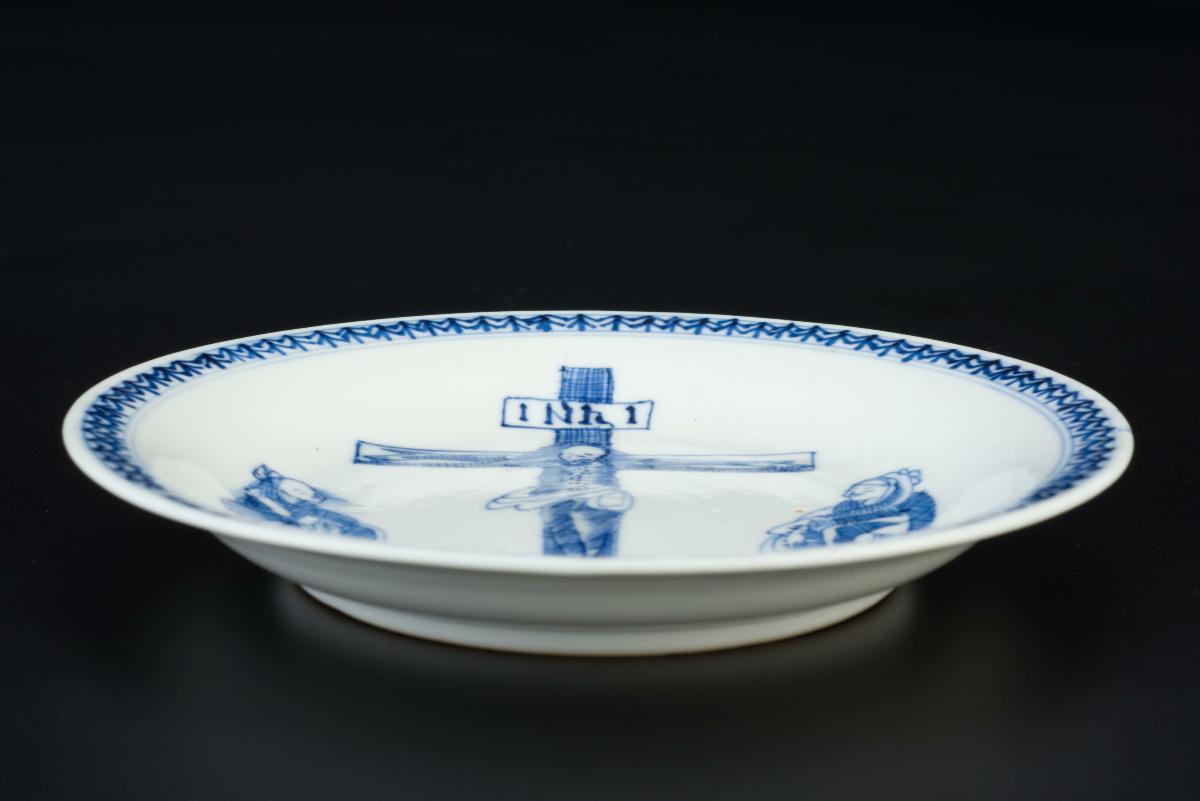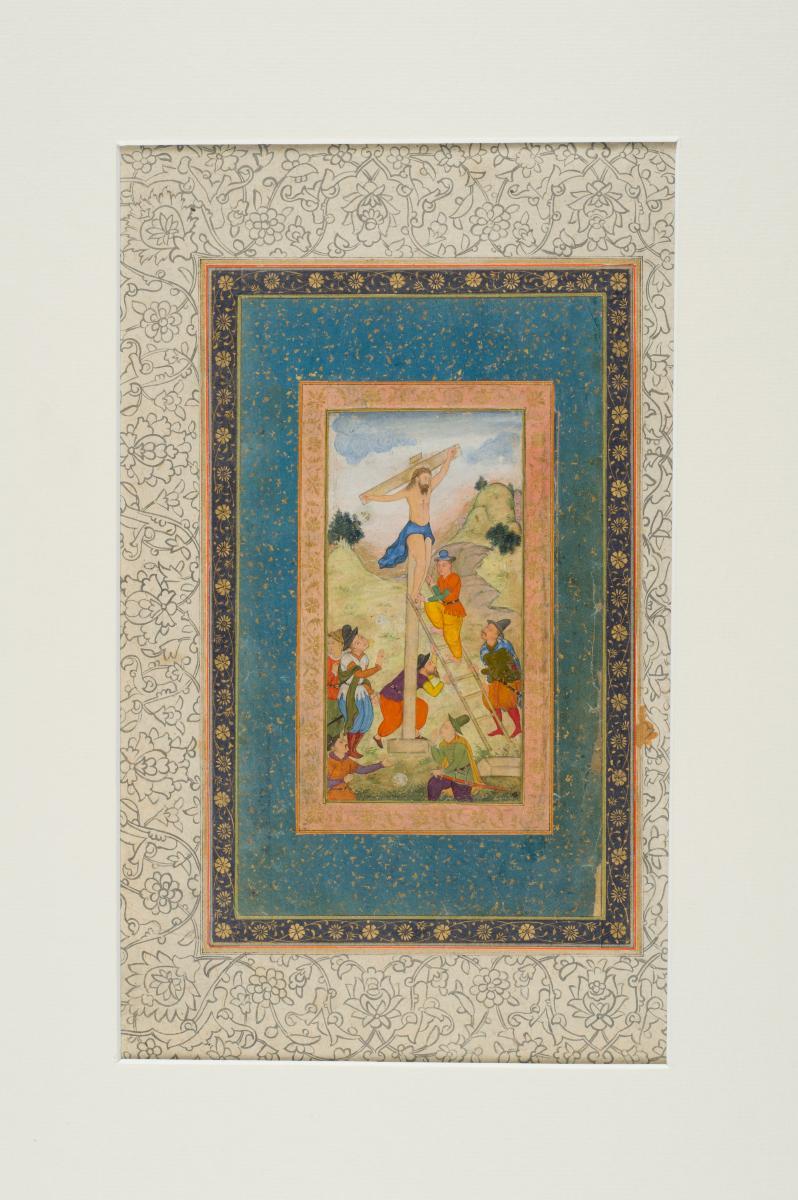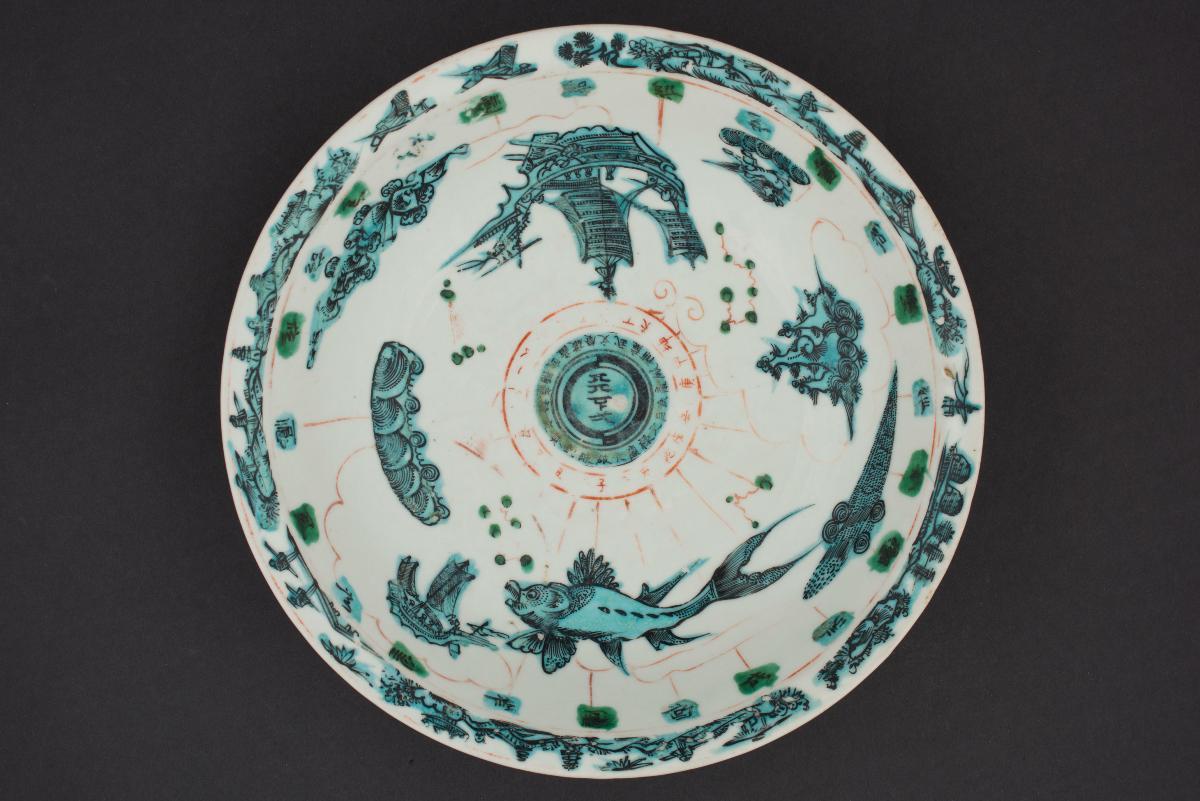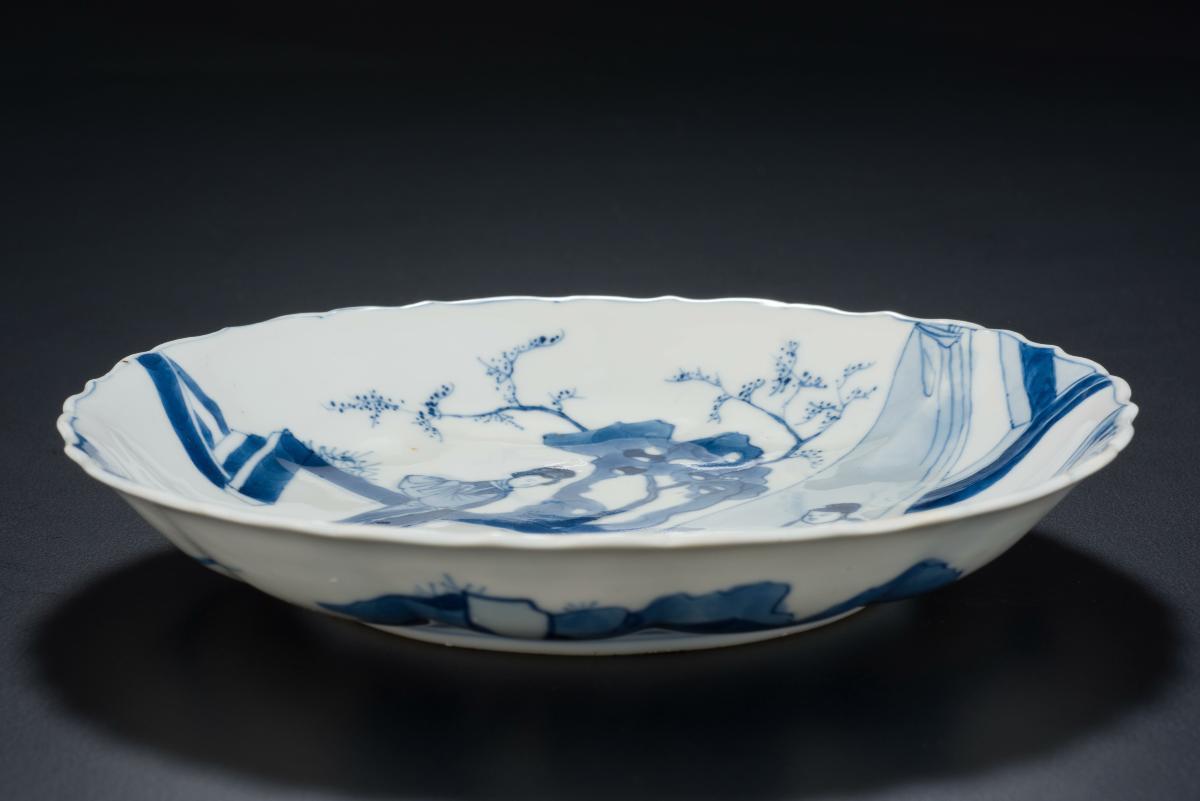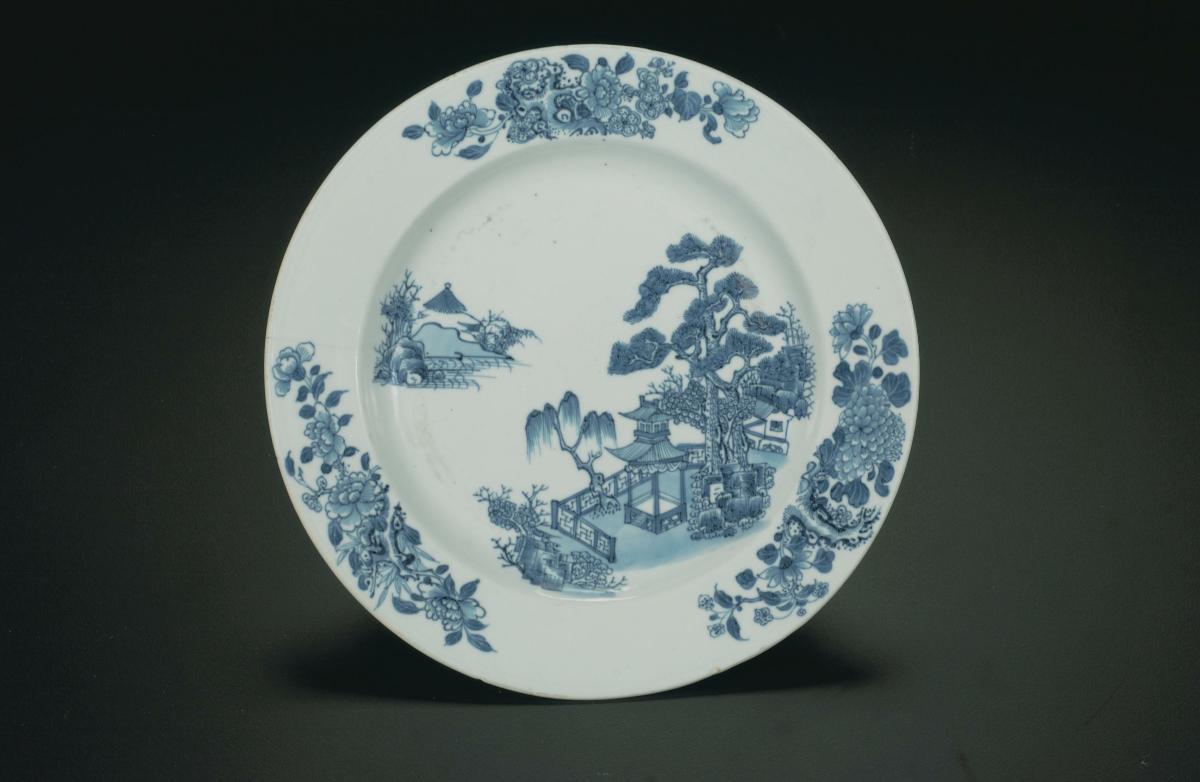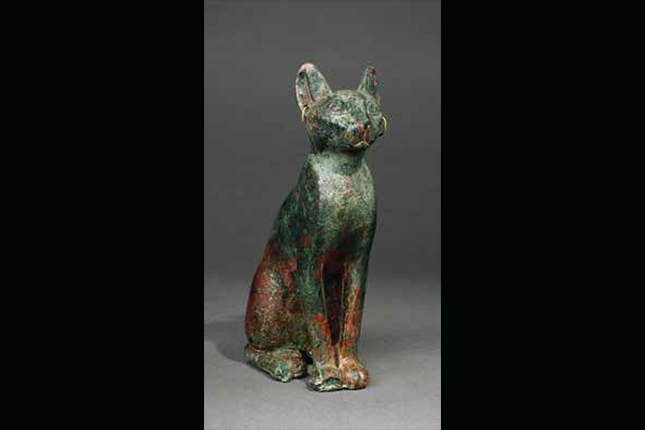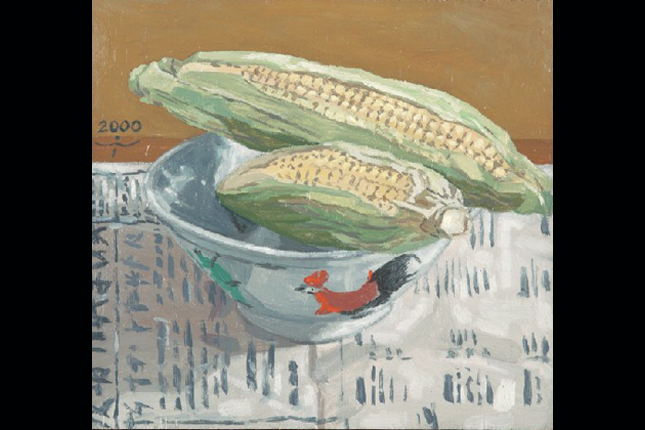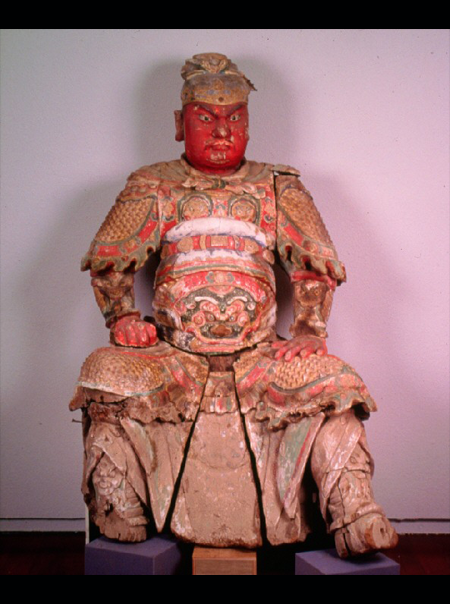This blue and white dish features a scene of Christ on the Cross in the central medallion, surrounded by a band of twin arrow motifs. This ‘crucifixion’ scene with the figures flanking the cross wearing Oriental robes, the absence of a crown of thorns on Christ’s head and the awkward inscription of ‘INRI’—the latin acronym for ‘Jesus of Nazareth, King of the Jews’ on the cross imply that the design was not commissioned by the Jesuit missionaries. Instead, it suggests that the potters could have been copying from the original source repeatedly and had added their interpretation to the design.The first Christian images appeared on porcelain pieces specifically made for the Portuguese market. Porcelain with Christian iconography has been ordered from the start of European orders in the mid-16th century and was highly popular among the upper classes.




